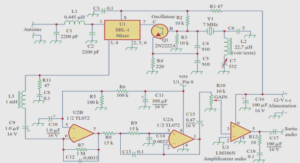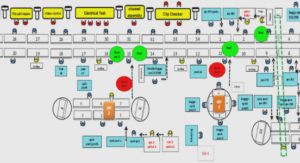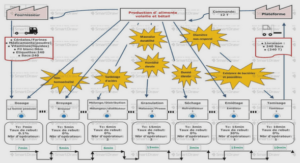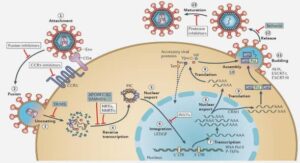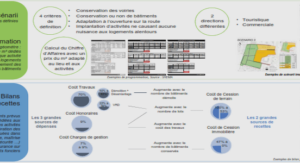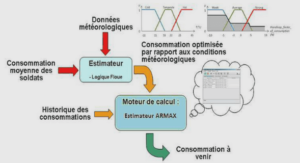VERS UN MATERIAU PLUS DENSE ENERGETIQUEMENT A LA COMPOSITION CHIMIQUE MODIFIEE
Material Selection and Preparation
The maritime pine (Pinus pinaster) was about 20 years old and came from south-east France. The pedunculate oak (Quercus robur) was about 35 years old and came from eastern France (Brin Forest, Nancy). Seven defect-free samples per species, measuring 5 × 1.5 × 20 cm3 (R,T,L), were cut from the sapwood part of the boards. The annual ring width for each sample was about 3 mm. The samples were stored under laboratory conditions before being oven-dried at 103 (± 2 °C) until equilibrium. The anhydrous masses were then determined to the nearest 0.001 g using a digital balance. Samples were stored in a desiccator containing silica gel until torrefaction. After heat treatment (see “torrefaction procedure” paragraph), a portion of each sample was crushed into powder. The powder was then sifted through a 40 mesh sieve and a 6 mesh sieve. The final particle size was less than 0.21 mm. The test material had an average basic wood density (oven-dry mass to green volume) of 563 kg/m3 for maritime pine (coefficient of variation (CV) of 3%) and of 603 kg/m3 for penduculate oak (CV of 4%).
Torrefaction Procedure
In order to assess the properties modifications due to the heat treatment, the treatment itself is of utmost importance and has to be accurately applied. In the present study we used a device specifically developed in our laboratory for this purpose (Colin et al. 2007). The whole atmosphere of a hermetically closed Memmert UFP400 chamber is controlled by a nitrogen flow rate to reduce the oxygen level. Consequently, the samples benefit from the high heat exchange coefficient ensured by the powerful fan situated inside the chamber (c.a. 35 W.m-2 .K-1 ). Such a good heat transfer reduces the difference between the gas and the sample temperature. For each test, the oxygen level remained below 1%. As this level is measured on the gas flow leaving the chamber by an Arelco ZOA 100 sensor, one can guarantee such a low level throughout the chamber. The gas temperature is measured nearby the samples using a calibrated thermocouple. Thanks to an Agilent data acquisition system piloted by a Visual Basic program, the heating rate was controlled, and the temperature, oxygen level, and sample mass were continuously recorded. Nitrogen flow rate was controlled thanks to a Fischer Scientific Bioblock flowmeter, and during experiments the nitrogen flow rate was about 5L/min. Several heat treatments were conducted at 220, 250, or 280 °C for 1 or 5 hours under nitrogen according Chapitre 2 86 to the following protocol: (a) heating rate of 5 °C/min up to 100 °C; (b) plateau at 100 °C for 30 minutes; (c) heating rate of 5 °C/min until the final treatment temperature is reached then maintained at this level for 1 or 5 hours; and (d) decrease in temperature by 2 °C/min down to 150 °C, achieved by opening all the oven valves allowing for a better cooling thanks to a higher nitrogen flow rate.
Chemical Properties
Acid-insoluble materials (AIM) and the extractives contents were determined on untreated and heat treated samples. AIM, consisting by a majority of lignin, were measured after wood hydrolysis with sulphuric acid according to the T-22 OM-88 method (TAPPI 1994a). The extractives content (ET) was determined as the content of products soluble in dichloromethane, ethyl-alcohol, and hot water according to the T-204 OM-88 method (TAPPI 1994b). The acid-soluble materials (ASM), consisting by a majority of cellulose and hemicelluloses, was calculated according to, ASM = 100 – ET – AIM (2) More details concerning the chemical analyses can be found in Brito et al. (2008). 2.3.4. Energy Properties The fixed carbon and volatile matter contents and the higher heating value (HHV) were determined on untreated and torrefied samples. The fixed carbon content and the Vers un matériau plus dense énergétiquement à la composition chimique modifiée 89 volatile matter content were measured according to ABNT-NBR-8112 (Determination of ash, volatile matter and fixed carbon in vegetal charcoal) (ABNT, 1986).The higher heating values of untreated and torrefied samples were measured according to the ASTM D5865 standard (ASTM, 2007) (dynamic mode at 25°C) using an adiabatic bomb calorimeter (IKA C2000). In order to better perceive the effect of heat treatment, dimensionless quantities were defined for the fixed carbon (FC*) and higher heating value (HHV*) by dividing the actual value by the corresponding value obtained for untreated samples: FC* = ( FCt / FCu ) (3) HHV* = ( HHVt / HHVu ) (4) where FCu is the fixed carbon content of untreated samples, FCt is the fixed carbon content of torrefied samples, HHVu is the higher heating value of untreated samples, and HHVt is the higher heating value of torrefied samples. The energy yield (ηE) was also determined according to the following formula, Energy yield (ηE) = ηM (HHVt / HHVu )daf (5) where ηM is the mass yield, which is the heat treated oven-dried mass divided by the untreated oven-dried mass (Bergman 2005), HHVu is the higher heating value of untreated samples, HHVt is the higher heating value of torrefied samples, and daf indicates a dry and ash-free basis.

